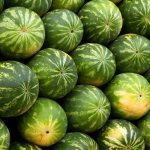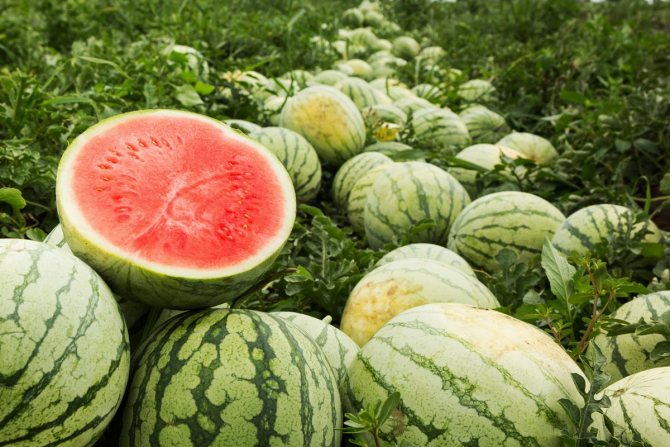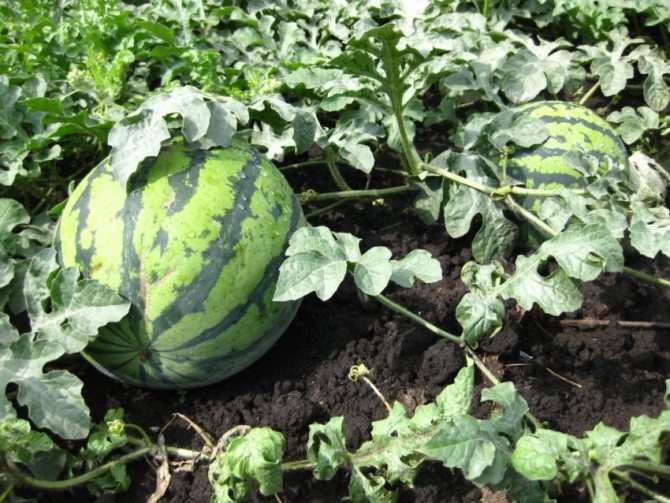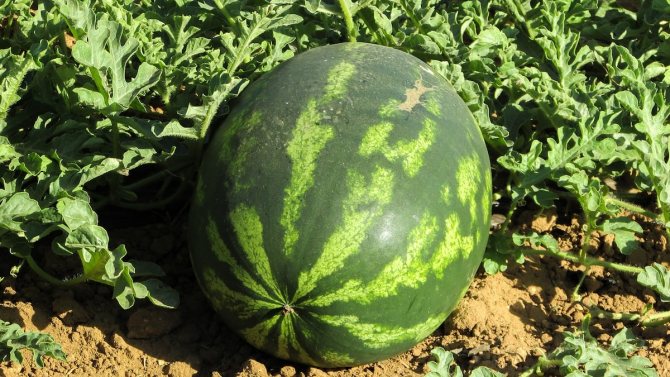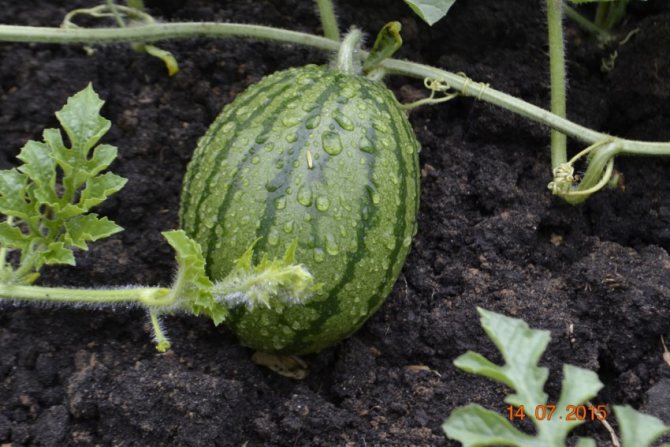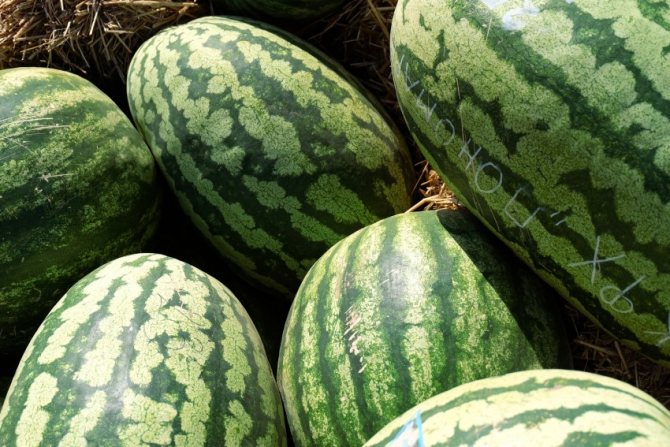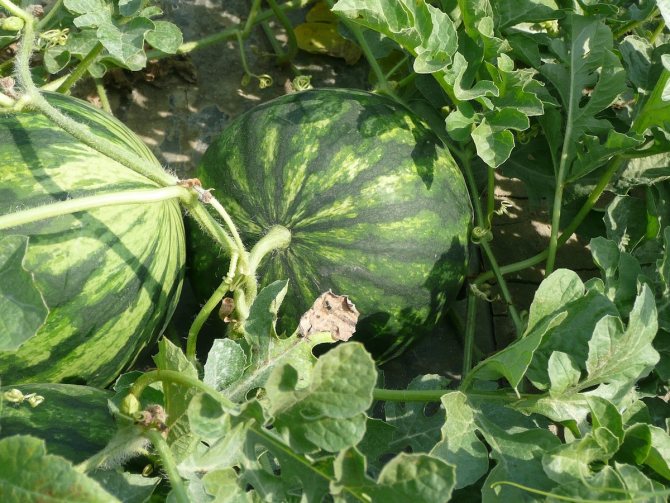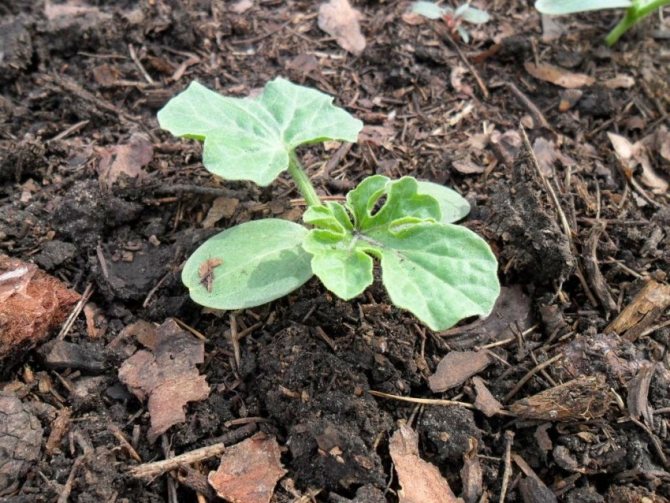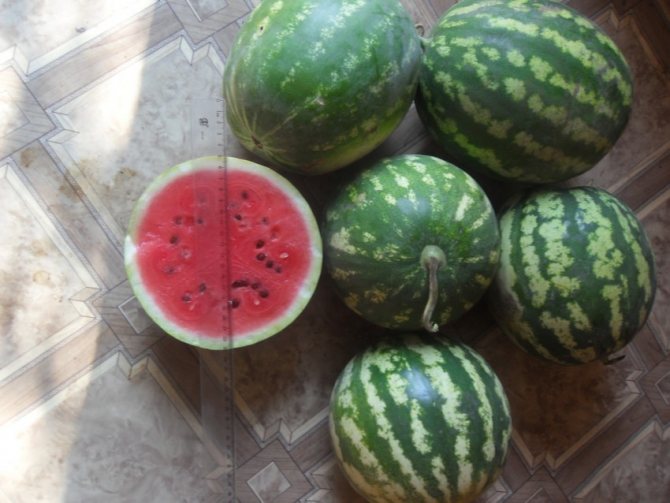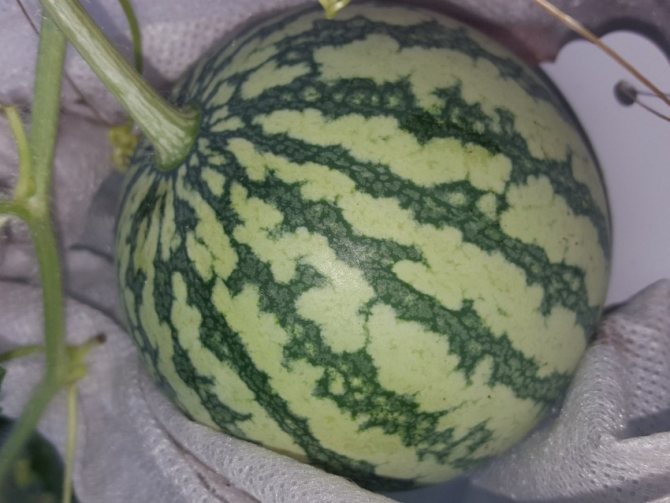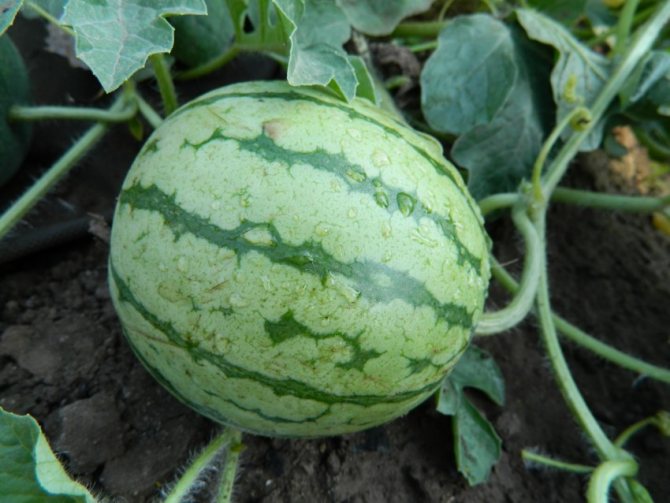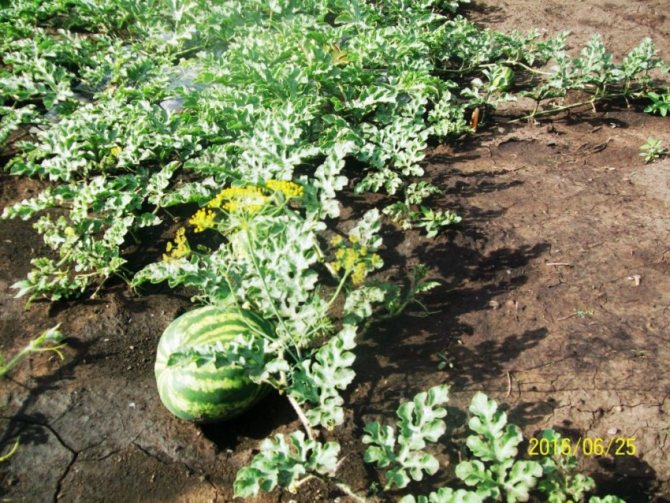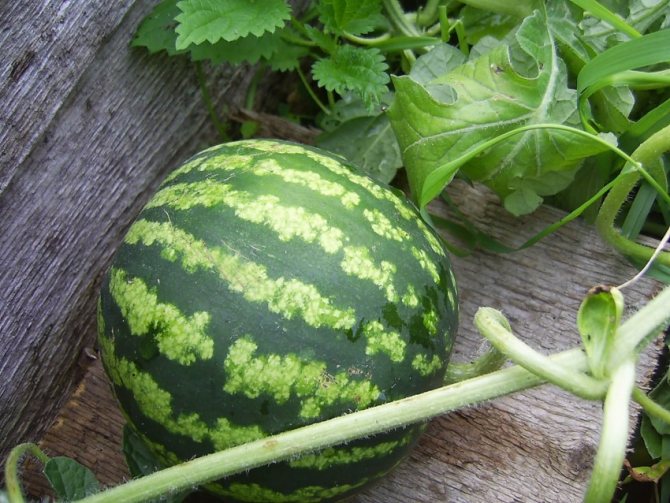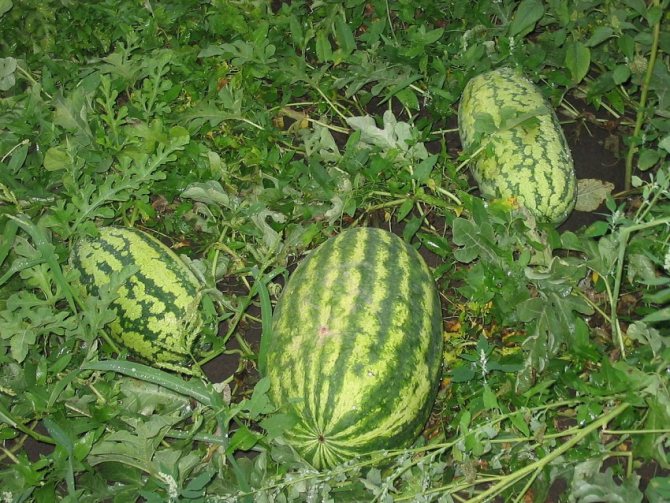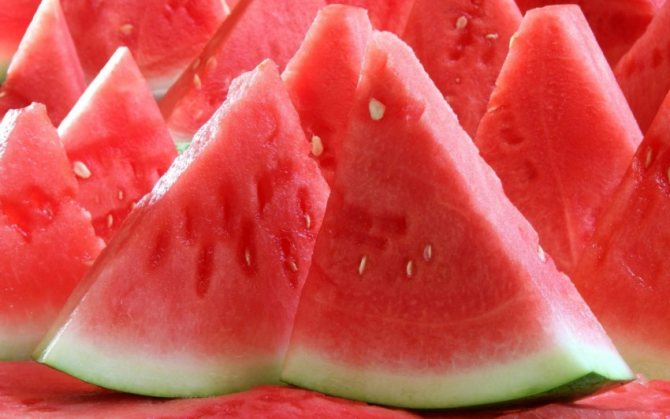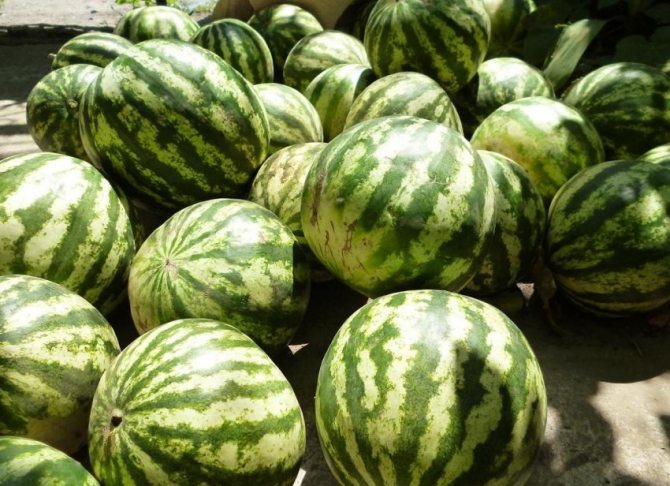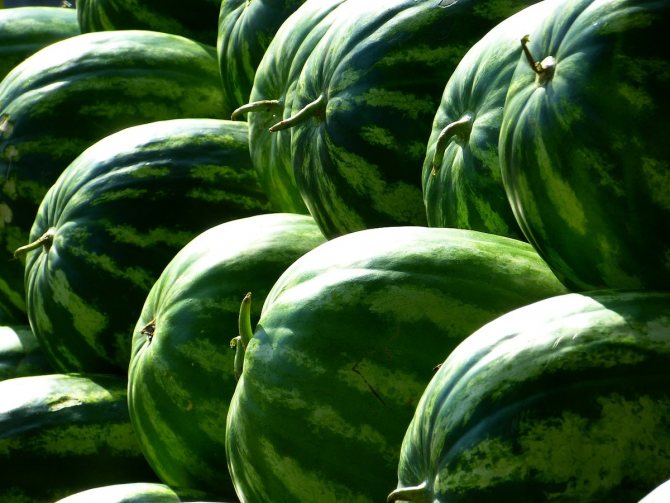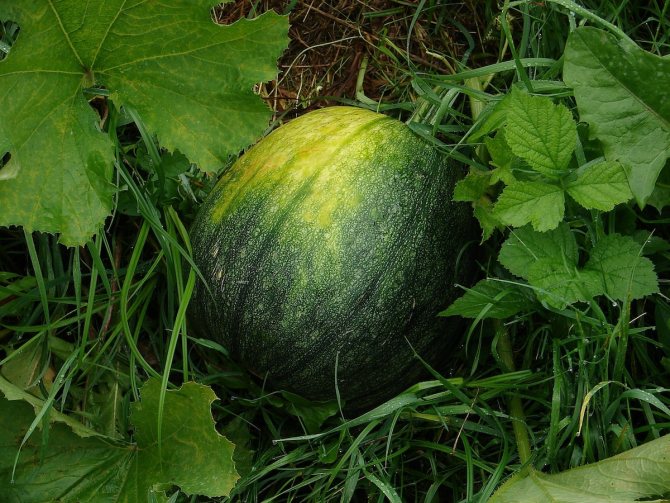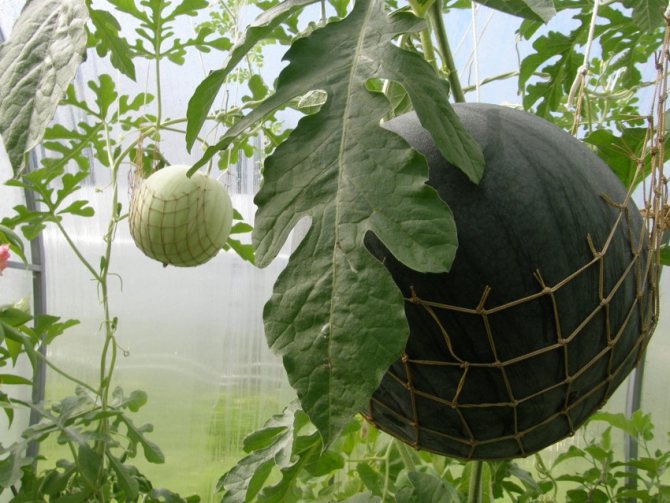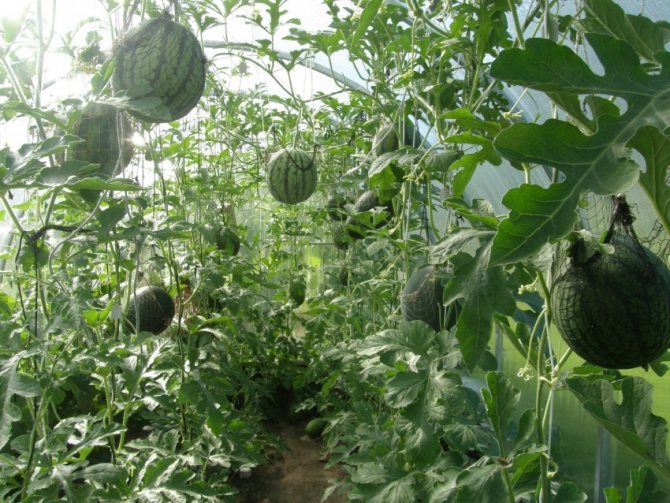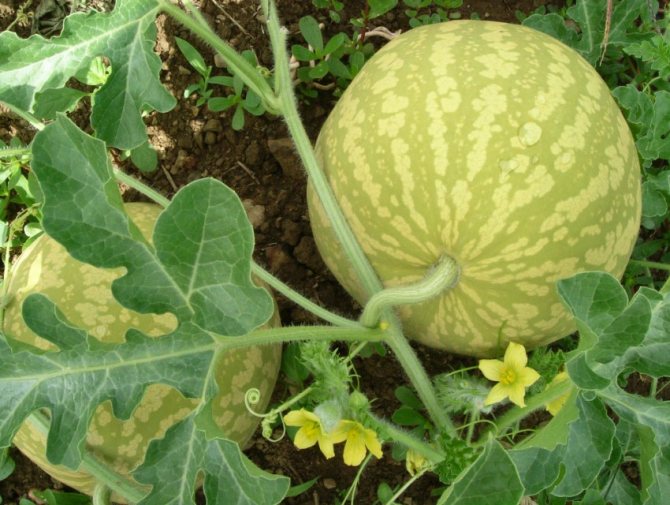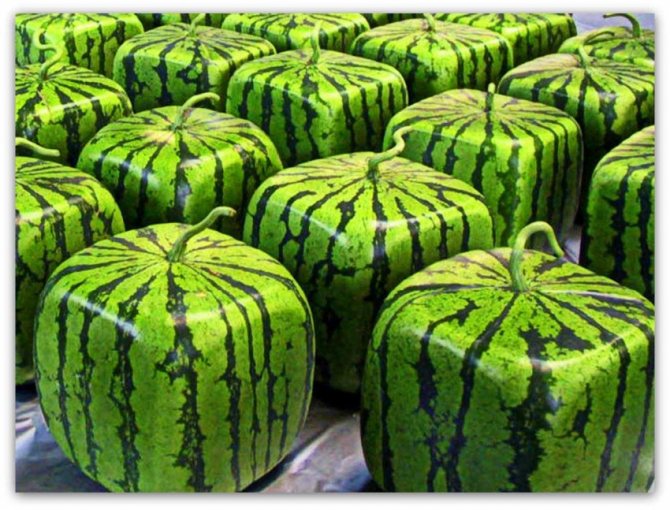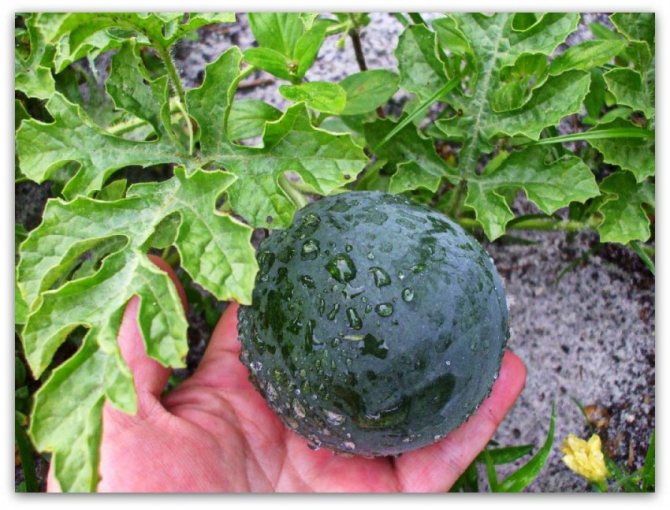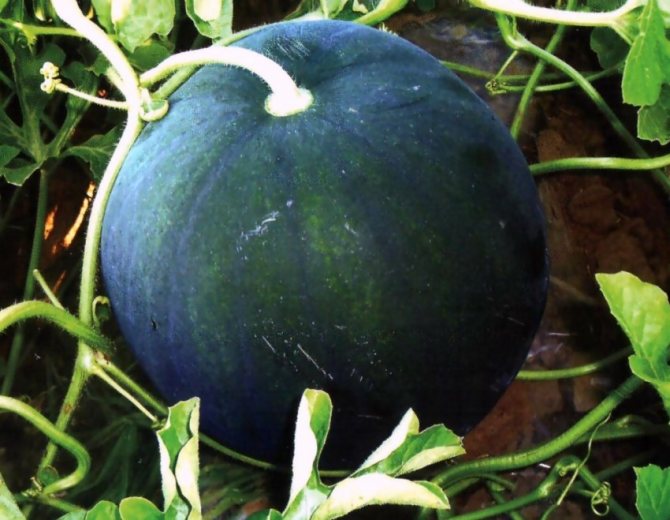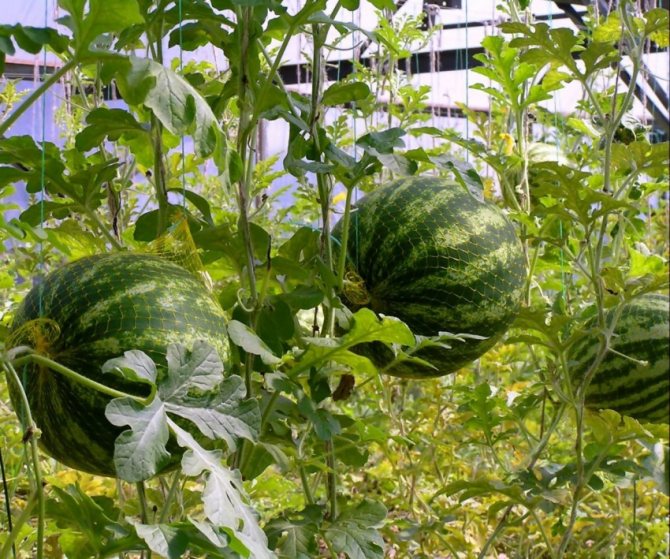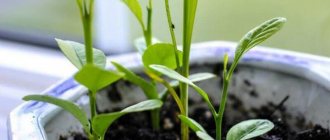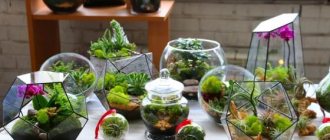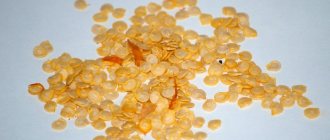How to plant watermelons? Everyone dreams of growing useful melons and gourds on the site. But watermelons prefer a warm climate, so for a long time it was believed that the berry can be grown only in the southern regions. But selection does not stand still, and today there are hundreds of hybrids adapted to various climatic conditions.
Photo: pixabay
A large watermelon starts with small seedlings.
Seedlings of watermelons begin to grow in late February - early March, when planted in greenhouses and hotbeds. If watermelon seedlings are planned to be grown in the open field, then the seeds are sown in April so that by the first decade of June the age of the seedlings is
Watermelons do not like picking and replanting, so seedlings should be grown in pots, preferably peat pots, so that the root system is not damaged when moving to a greenhouse, hotbeds or into open ground.
Immediately after sowing the seeds, it is necessary to keep the soil moist, preventing the earthen coma from drying out. The root system of watermelons at a tender age is very weak, it develops well by the time of flowering and fruiting, so a moisture deficit can greatly harm seedlings.
The soil for watermelon seedlings is prepared by mixing humus soil and peat, with the addition of sod land and mineral fertilizers: superphosphate or wood ash (based on teaspoons per liter of soil mixture). You can buy ready-made soil for watermelons.
It is recommended to disinfect watermelon seeds before sowing in a slightly pink solution of potassium permanganate. During disinfection, the quality of the seeds is checked, the floating seeds are removed, since they are empty.
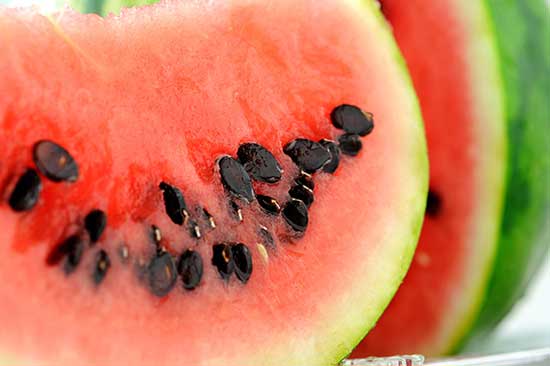
Watermelon seeds are prepared for planting in advance. Photo: Gardening Know How
Experienced gardeners have different opinions about germinating seeds in wet gauze: some say - "it is necessary", others say - "in no case." It's up to you to soak or not, I don't soak the seeds, but plant two seeds in pots, and then remove the lagging ones. Soaking does not shorten the growing period and does not guarantee the growth of germinated seeds when planted in soil.
After sowing the seeds, the pots are placed in a warm place - at temperatures below + 15 ° C, the seeds of watermelons do not germinate, and the germinated seeds inhibit growth and development.
Caring for watermelon seedlings is simple: watering, feeding, good lighting and maintaining the temperature within + 22-26 ° C. The air humidity should be within the limits, that is, lower than that of cucumber seedlings.
Before planting in open ground or in an unheated greenhouse, watermelon seedlings are hardened, gradually lowering the ambient temperature to + 18 ° C. During the hardening process, the seedlings can be treated with 1% Bordeaux liquid or similar fungicides, in order to avoid root rot when the environment changes.
Also, before planting in open ground, watermelon seedlings are fed with complex fertilizers. It is desirable that fertilizers are specifically for berry plants. In the absence of, you can use a mixture of mineral fertilizers containing superphosphate, ammonium sulfate and potassium sulfate, according to the attached instructions.
Biological description of watermelon
The root system of a watermelon is powerful, but weaker than that of a pumpkin, but it has great suction power. The bulk of the roots is located at a depth, individual roots penetrate deeper and deeper.The formation of the root system in a watermelon ends during the flowering period.
The stem of the watermelon is creeping, creeping, highly branched, reaching length. Leaves are heavily dissected, especially in heat-resistant varieties. Flowers are formed in the axils of the leaves. Male flowers are smaller than female flowers.
The flowering of watermelon begins on the 40-50th day after sowing. First, male flowers open, after 10 - 15 days - female. Mass flowering of male flowers occurs on the 60-65th day, and for female flowers on the 75-80th day. The growth of a fertilized ovary is most intensive in the first period of its development.
The fruit of a watermelon is a juicy berry of various sizes, shapes and colors, depending on the variety and growing conditions. The fetus develops and ripens in days after fertilization. The fruits form on the main stem.
The fruit consists of bark, pulp and seeds. Pulp of different consistency and color, with different sugar content. Fruit weight can reach, however, in most varieties, it ranges within the diameter of the fruit and more. Watermelon seeds are ellipsoidal, of different sizes and colors.
Storage conditions for watermelon
The duration of storage of watermelon is influenced by various factors: the characteristics of the variety, the climate of the growing zone, the technology of cultivation, the quality of harvesting. If the watermelon grew on dry land, if it was not stimulated with nitrogen fertilizers, then it will stay longer. If sowing was late, if watering continued throughout the growing season and nitrogen fertilization was present, less.
The quality of fruit harvest is no less important for long-term storage - any scratch is a "door" for infection. Therefore, it is necessary to remove and transport the crop carefully, laying the fruits in one layer on a soft (straw) bed.
On average, the most common varieties in private gardening can lie for about a month - 25-35 days. Some late varieties and hybrids - about four months: "Atlant", "Snezhok", "New Year".
The optimal storage conditions for watermelon is a cool room with a temperature in the range of + 2 ... + 8 ° C, the relative humidity of the air being in the region of 80-85%.
Fact! The largest watermelon weight - 61.4 kg on the territory of the European continent was recorded in the Krasnodar Territory in the variety "Russian size".
Watermelons in the open field
It is possible to grow watermelons in the open field, but it takes a lot of luck and a favorable combination of weather conditions, but much depends on the gardener. For example, preparing nutritious soil and caring for growing plants.
Watermelons do not grow in poor soil. Therefore, the soil for a watermelon plantation is prepared in the fall, removing the previous crops. The best predecessors of watermelons are cabbage, legumes, potatoes.
It is recommended to make ridges, introducing semi-rotten manure or compost at the rate of 100 kg of compost per 10 m 2 ... Under the snow, the watermelon bed will reach the desired condition by the next season.
Agrotechnics of watermelons
Watermelon is a thermophilic plant. At temperatures below + 15 ° C, the seeds do not germinate. At all stages of growth and development, the temperature should be above + 15 ° C. During the period of fruiting and ripening, the optimum temperature is within + 25-28 ° C. Prolonged cold snap, especially at the beginning of the growing season, slows down and even stops the development of plants, and can lead to their death.
In the initial period of growth and development, watermelons are very demanding on water. When the root system is fully formed, the need for water decreases. Watermelon roots provide 7 times more water to the plant than corn roots.
Watermelon is a light-loving plant that grows well in open, sun-warmed places. The plant is demanding on the structure and fertility of the soil. The most suitable for it are loamy and sandy loam soils, moisture-consuming, water- and air-permeable.
Seedlings of watermelons are planted in open ground late May - early June (up to the 10th), one at a time, two seedlings in one hole.The technique of planting watermelons is similar to the technique of planting squash and pumpkin. That is why I pre-grow two seedlings in one pot.
Watermelon care in the open field is simple: loosening, watering, fertilizing and frost protection.
Weed control on watermelon ridges is possible before the mass growth of lashes, then there is only harm from such a struggle, but watermelons must be constantly protected from diseases.
Watermelons suffer mainly from fungal diseases - fusarium, bacteriosis, etc. Therefore, Fitosporin and 1% Bordeaux liquid should always be at hand.
From freezing, watermelons are covered with caps made of paper or plastic, you can use non-woven materials such as "Agrospan", etc. The main thing is that the plants do not get frostbitten.
Loosening the soil helps the roots not to rot with regular watering, so they loosen them to a depth after each rain or watering, loosen them until the lashes fill the space between the ridges.
The whips of watermelons are easily overturned by a strong wind, so they must be pinned to the ground with improvised materials or sprinkled with damp earth for better rooting.
Feeding watermelons in the open field, they make fertilizers for pumpkins and zucchini, in similar doses. They are fed regularly - once every
The harvest of watermelons begins to be harvested as the berries ripen, in late July - early August.
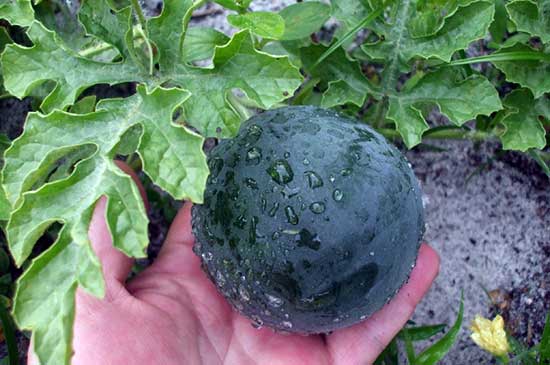

Unripe watermelons have a matte rind, while ripe watermelons are glossy. Photo: Gardening Know How
Ripeness watermelon can be identified by the appearance of the rind. Ripe watermelons become glossy, while unripe watermelons have a matte rind. In ripe watermelons, the bract dries out, the hairs of the stalk fall off. Early ripe varieties emit a dull sound when tapped.
The harvesting of watermelons in the open field is completed before the onset of frost. In a warm, dry room, unripe fruits can ripen.
A guaranteed annual harvest of watermelons can only be provided by protected ground - a greenhouse, a greenhouse, a tunnel.
Diseases of watermelon
Today, one of the most common and difficult to define diseases of watermelon has become mosaic viruses - Watermelon mosaic virus (WMV) - fruit skin becomes patterned, and Marrow mosaic virus (MMV) - leaves wrinkle. And also the cucumber mosaic virus Cucumber mosaic virus - the leaves wrinkle, curl upside down, light areas appear on them, plant growth is inhibited, flowering is weak, yellow-green mottling and dark "warts" appear on the fruits.
Powdery mildew
The causative agent is the mushroom Erysiphe cichoracearum DC. cucurbitacearum. The disease begins to manifest itself at the beginning of summer. Loves temperature extremes and dry air. Appears in the form of whitish powdery growing spots. Affected leaves turn yellow and dry out.
Peronosporosis (downy mildew)
The causative agent is the mushroom Pseudoperenospora cubensis Rostowz. It manifests itself in the form of angular spots on the upper side of the leaf; on the lower side, a grayish bloom of sporulation forms on the spots.
Fusarium
The causative agent is the fungus Fusarium oxysporum Schl. f. Niveum Bilai. It penetrates into plants through the root system, through infected seeds. It can manifest itself throughout the growing season, from germination to harvest, as well as during storage. Loves cool, wet weather.
Symptoms: first, the tops of the whips and individual leaves fade, brown stripes form along the stem from the root collar, the plant withers.
White rot (sclerocial rot)
The causative agent is the fungus Sclerotnia scleotiorum (Lib.) D. By. It provokes decay of the roots and completely of the entire aerial part of the plant. The manifestation of symptoms begins with darkening of the stems, the formation of watery spots on the leaves and fruits. Then, a cotton-like plaque appears on the affected tissues, in which the sclerotia of the fungus is formed.
Ascochitosis
The causative agent is the mushroom Ascochyta melonis Pot.It manifests itself in the form of whitish or grayish spots with a brown border, on which dark pycnidia form over time. Affected leaves turn yellow and dry out.
Gray rot
The causative agent is a mushroom Botritis cinerea Pers. The symptoms of the disease are vague brown-green rotting spots on the leaves and fruits, which eventually become covered with dark gray sporulation of the fungus. However, in dry weather, the spots look like brownish dry sores, the necrotic tissue of which cracks and falls out.
Anthracnose (copperhead)
It is especially pronounced in rainy years in irrigated areas or in lowlands with stagnant humid air. The causative agent is the fungus Colletotrichum lagenarium E. et H.
Symptoms: brown spots with yellow edging appear on the leaves. Affected leaf plates become brown, brittle. On fruits, sunken brown spots are covered with a pinkish bloom during wet periods. On the stems, the spots are oblong and copper-red in color.
Pitious rot of watermelon fruit
The disease is caused by Pythium Pringsh mushrooms. A dense white mycelium appears on the fruits, which over time can cover the entire surface of the watermelon.
Watermelons in greenhouse and greenhouse
A greenhouse for watermelons is identical to a greenhouse for cucumbers, with the exception of air humidity - for watermelons it should be no higher than 70%. Otherwise, the mode of growing watermelons is similar to cucumbers: temperature + 26-28 ° C - during the day, + 18 ° C - at night, good lighting, abundant watering, etc.
In solar-heated greenhouses, watermelon plants are planted in mid-May. For planting use 25-35-day seedlings grown in pots.
Seedlings of watermelons are planted on ridges or ridges, along side fences. The ridges are made wide by the height and the ridges - by the height by the width at the base
Seedlings are planted in holes a depth of one rad, observing the distance between the plants The planting technique is similar to planting cucumber seedlings.
The stems of the watermelon need support, therefore they make trellises in the greenhouse... The wire is pulled in several rows across on both sides of the greenhouse. When the stalks of watermelons grow in height, they are tied to a trellis. Shoots, flowers and ovaries that have appeared up to this height are plucked out (counting from the root collar).
The berries form on the main stem. On one watermelon, depending on the variety, from 2 to 6 ovaries are left, the rest are removed so as not to overload the plants.
Watermelon care similar to caring for cucumbers. The only difference is that watermelon requires moderate watering and low air humidity - In addition, in large-fruited varieties, ovaries that have reached in diameter are placed in a special mesh, which is tied to a trellis.
Greenhouse watermelons
Watermelons can be grown in greenhouses and tunnels. In deep greenhouses, heated with biofuel, watermelon seedlings are planted in late April - early May, in film greenhouses and tunnel shelters - in the middle of May.
They are planted under one greenhouse frame. In 160 cm wide film gable greenhouses, seedlings are planted in one or two rows.
With a one-line planting method, the row is placed along the western lad, departing from it by 20 cm.Plants in the row are placed every 50 cm.
With a two-line planting, one row is placed along the western one, the other along the eastern lad, departing from each of them by 20 cm. The holes in the rows are dug through 80 cm in a checkerboard pattern.
The stalks of the watermelon, with a one-line planting, are directed towards the eastern lad; with two-line - the stems of the eastern row towards the western lad, and the stems of the western row toward the eastern lad. With this arrangement, the stems of the plants are evenly distributed over the entire area of the greenhouse.
In tunnel film shelters, seedlings are planted on ridges or ridges, which are arranged in advance by the time of planting. Holes are dug deep in the middle of a ridge or ridge at a distance in a row. A nutrient mixture or humus is added to each well.Then the seedlings are watered and planted. The planting site is mulched with peat. After planting the seedlings, the tunnel frame is covered with a film and, if the weather is sunny, shade with burlap or household rags.
Caring for watermelon plants in greenhouses and tunnel film shelters is the same as for a cucumber.
The air temperature during the daytime is maintained at + 22-30 ° C, at night + 18-22 ° C, the relative humidity is not higher
On each plant, fruits are left in small-fruited and in large-fruited varieties. The rest of the ovaries are pinched.
I wish you to grow a large harvest of watermelons!
Previously, no one could have imagined that watermelons could be grown elsewhere, except in the south of our country. However, at the end of March 2020, 211 varieties and hybrids adapted for various climatic conditions were registered in the State Register of the Russian Federation; including those that can be grown in all regions.
Today we will talk about table watermelon (Citrullus lanatus) - it is this species that pleases us so much with its delicious fruits. Watermelon belongs to the Pumpkin family. The fruit (pumpkin) is a multi-seeded berry.
Old acquaintances - table watermelons. Watermelon flowers are divided into female, male and bisexual. The bulk of the varieties are bisexual, but there are also those in which the flowers on the plant are strictly unisexual. Female flowers are somewhat larger than male ones. Like many plants in this family, the watermelon is cross-pollinated.
Watermelon flower Watermelon flowers are located on the main shoot in the axils of leaves according to the ripening period: in early ripening - from 4 to 11 leaves, with an average period - from 15 to 18 leaves, late varieties have flowers in the axils from 20 to 25 leaves.
Harvesting watermelons
The ripening period of watermelons differs depending on the variety, but in general it is 32–45 days. From 30-40 days, the fruit begins to accumulate sweetness, so you should not rush to pick it up. Melon growers have a rule: it is better to remove it 7 days later than before, since during storage the pulp will turn red a little more, but it will not become sweeter.
The early varieties of this culture are harvested selectively, as the fruits ripen, the middle and late ones - often once. The easiest way to tell if a watermelon is “ready” is to lightly tap its barrel. There is a ringing - that's it, the sweetness is dialed, you can carry it on the table. However, in fact, there are much more ways to determine the ripeness of a watermelon, and if harvesting is massive, they are useful.
Additional characteristics of ripeness in this culture are the drying of the antennae near the stalk, drying out of the tail itself. In varieties with striping - a clear manifestation of the pattern of the watermelon rind. In varieties with an unexpressed pattern, evenly colored, as, for example, the well-known variety "Ogonyok" - a slight erasure of a bluish bloom with your hand, as well as a change in the color of the side on which the watermelon lay on the ground, from white to yellow; the acquisition of a specific shine by the crust (unripe watermelon matte).
And a few more important rules. If watermelons are supposed to be stored, they must be harvested no earlier than 5 days after rain, otherwise they can rot. Select only ripe fruits - overripe and unripe quickly deteriorate and practically do not lie.
Choosing a place for planting a watermelon
For melon, allocate a place on the southern or southeastern side of the site, protect it from the winds. Close deposits of groundwater are unacceptable. For a better outflow of water and warming up the soil, you can make beds about 15 cm high, with a slope to the south. For growing watermelons, soils with a neutral reaction are best suited, with a light structure - sandy loam or sandy. For the autumn digging, it is necessary to add organic and phosphorus-potassium fertilizers; it will not be superfluous to add wood ash or dolomite flour. Also, a watermelon can grow well on a compost heap.
For melon, allocate a place on the southern or southeastern side of the site. It is not recommended to grow a watermelon after related crops. But legumes and cabbage are good predecessors.
Sowing watermelon directly into the ground
You can sow watermelons directly into the ground, but you need to choose the right variety or hybrid for your region, otherwise you can not count on a good harvest. Sow the watermelon when the soil is warmed up to a depth of about 10 cm and the optimum temperature for seedlings is set to +15. + 16 ° C.
So that the watermelons have time to ripen - choose the right varieties or hybrids. After the emergence of seedlings, they are thinned out for the first time, and in the phase of 3-4 true leaves - again, leaving the strongest seedlings at a distance of about 1 m from each other. In the greenhouse, you can take a smaller distance, about 70 cm.
Planting watermelon seedlings
The use of seedlings will help solve the problems of the short warm period required for fruit ripening, poor ovary and excess moisture in early summer. In my climatic conditions, the period when the watermelon fruit grows (summer) is shorter than the growing season, even in varieties and hybrids with an early ripening period.
Sow in the beginning of May, immediately into separate pots with a capacity of at least 0.3 liters, because the watermelon does not tolerate transplanting well.
Seedlings of watermelon The soil mixture is composed of sod land, sand and peat, taken in equal parts. For 5 liters of the mixture, add about 50 g of dolomite flour and potassium sulfate, about 100 g of double superphosphate, about 50 g of ammonium nitrate.
Before sowing, preferably 30 minutes. warm up the seeds in hot water (+50. + 55 ° С). Then germinate them in wet sand at a temperature of about + 25 ° C. When the seeds have root rudiments, plant them in pots, sprinkle with sand, cover with foil and put in a warm place. During the day, the temperature should be about + 25 ° С, and at night it should be reduced to + 20 ° С. Shoots will appear in about a week.
Daylight hours should be at least 12 hours, otherwise the development of seedlings may stop. With a lack of light, seedlings can stretch out, therefore, on cloudy days or in a poorly lit room, seedlings need to be supplemented with phytolamps.
When the seedlings already have 3 real leaves, they need to be fed with mullein and liquid mineral fertilizers.
Soon, watermelon seedlings will need to be fed B mid June you can plant seedlings in the ground, in a permanent sunny place. If you had to move her to the garden earlier, when the threat of recurrent frosts is still relevant, practical advice from experienced gardeners will help to save the plants.
Where do watermelons grow: requirements
Most often, gardeners grow table watermelon, which is distinguished by its sugar sweetness. Now it is difficult to answer exactly where the culture is growing, since hybrids feel great in different regions of the country. In the south, melon plantations are grown without much effort, because the berry prefers sandy soil and open sunny places. All you need is periodic weeding and drip irrigation.
In the middle lane, the cultivation of watermelons is carried out both in greenhouses and in the open field. In the first case, trellises are installed so that the lashes grow vertically and take up less space. Growing fruits are placed in nets and hung. On the site for the berries, a sunny, windless place is selected, and also warm beds of straw or hay are prepared.
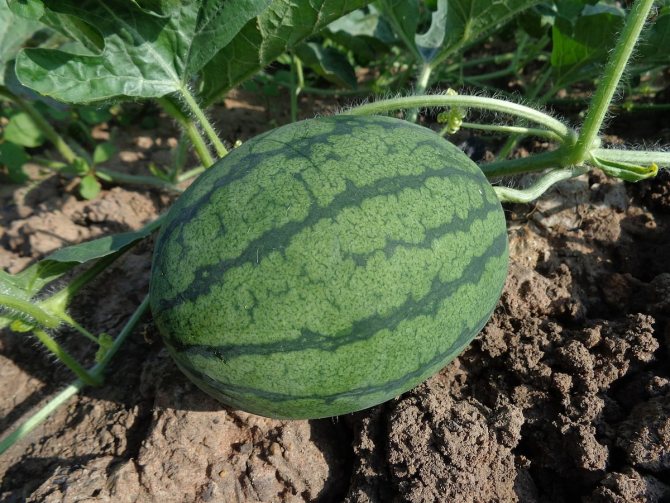

Photo: pixabay
Here are the basic cultural requirements for the area:
- Plot in the south or southeast, which is sheltered from the wind.
- Nearby groundwater deposits are unacceptable. The ideal option is sandy and sandy loam soil.
- The best predecessors are cereals, potatoes, corn, cabbage, annual grasses.
- Planting watermelons is impossible for several years in one place. It is also undesirable to plant them next to melons, since crops are prone to the same diseases.
Remember that too much moisture leads to root death and fruit rot. Therefore, choose a dry and open place, preferably away from other plants.
Watering
The root system of a watermelon is stem, goes to a depth of more than 1 m, lateral adventitious roots can occupy a sufficient area in the upper layers of the soil.After planting, you can water not often, but abundantly: 3 buckets per 1 m², and at the time of flowering, watering is carried out at least 2 times a week. During the period of fruit ripening, watering is stopped.
Water the watermelon properly. Photo from the site et.wikipedia.org The subtlety of growing watermelons is that with a sharp cold snap, he can get sick and die, for normal development and full fertilization of the ovaries, he needs a temperature of +25. + 30 ° C.
Already at + 15 ° C, plant growth slows down, therefore, in unpredictable weather conditions in the middle zone, many cover melons with a film. On the inside, abundant condensation can form on it; to remove it, stretch gauze or non-woven material under the film.
Pollination is considered another subtlety of growing watermelons: if the weather is cloudy, it is more difficult for bees to do their job, so you need to touch two or more pistils on other flowers with stamens from one flower.
In the southern regions of our country, the tops of the shoots are removed: their growth stops, they begin to branch more strongly, the fruits are larger.
Watermelon pests
Watermelon, like other crops from the Pumpkin family, damages over 50 species of phytophages. Wireworms, false wireworms, sprout fly larvae, various types of beetles, a bear damage seeds and seedlings.
During the growing season on a watermelon, you can find melon aphids, spider mites, whiteflies, tobacco thrips, various types of scoops, caterpillars of the meadow moth. The most dangerous are the winter scoop, beetle, wireworm and false wireworm.
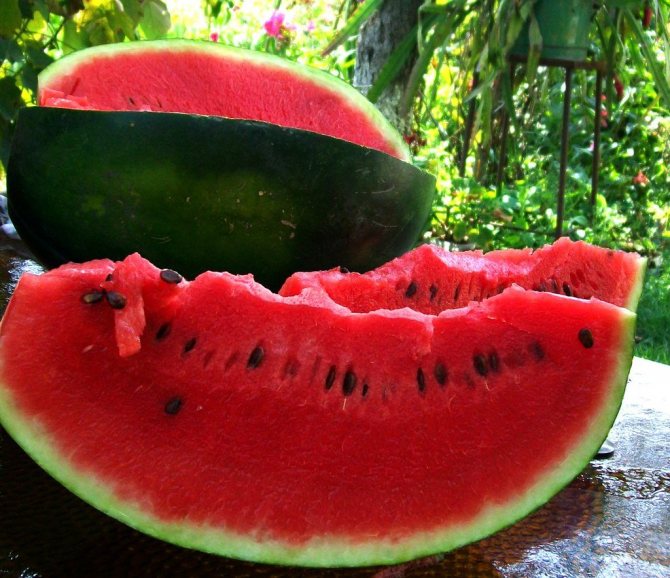

The pulp of watermelon is used to remove excess moisture from the body, cleanse the kidneys and liver, and restore the acid-base balance.
Varieties and hybrids of watermelons
In order to somehow organize the varieties of watermelons belonging to one common variety, they were divided into 10 conditional groups, distributed geographically:
- Russian
- Western European
- Transcaucasian
- Asia Minor
- Indian
- Afghan
- Central Asian
- Far Eastern
- East Asian
- American
The varieties of watermelons that are grown in our country most often belong to the Russian group, less often to the Transcaucasian and Central Asian ones.
Watermelons can be grown indoors. When choosing a variety or hybrid for your region, pay attention to the growing season. Early varieties are suitable for cool non-chernozem regions, and varieties and hybrids with medium and late ripening are good for warmer regions. You also need to look at drought and frost resistance. Surely many will benefit from the personal experience of our readers who successfully grow watermelons in various regions: Moscow region, Novgorod region, Leningrad and Volgograd regions, Khabarovsk Territory, Buryatia!
‘Spark’
This variety belongs to the early maturing, it can be grown in the Non-Black Earth Region: 71-87 days pass from germination to ripening.
Watermelon 'Spark' variety. Photo from the site The shape of the fruit is spherical, the average weight is about 2.5 kg. The pulp is bright red, sweet; the peel is thin, black-green. The seeds are small. It is sown in the ground from April 20 to May 10. Seedlings - from May 25 to June 10. Landing scheme - 1 mx 0.6 m.
‘Crimson Sweet’
Can be grown on short, hot summers. From germination to harvest from 60 to 70 days.
Watermelon 'Crimson Sweet' variety Anthracnose resistance is good, powdery mildew is also almost not affected. It will weigh about 3 kg, the taste is rich, very sweet.
You can choose watermelon seeds on our market, where offers from the largest online stores are collected.
We are used to chic decorative flowers, but few people know how some vegetables and melons from the garden bloom. But their buds also delight with their beauty and unusual attractiveness.
Flowers on melons
To begin with, let's analyze how a watermelon blooms, because it has three types of flowers. Usually this:
- "Male" - characterized by group flowering, evenly distributed on the plant and have five stamens;
- "Female" - bloom singly, they are wide, rounded;
- bisexual, which have three anthers and a pistil.
The color range ranges from greenish-yellow to intense lemon. Male plants bloom later, but they only last for one day and are smaller in size.
It looks like melons are blooming, because they also have heterosexual flowers. Their color is bright yellow. First, male ones appear (they have well-developed stamens), and then after a while female (with the presence of a pistil) and hermaphrodite ones. It is characteristic that the male flowers bloom in inflorescences, and the female ones bloom singly.
Botanical description of the plant
Ordinary watermelon, or table watermelon (Citrúllus lanátus) belongs to the genus of the same name Watermelon from the many-faced Pumpkin family. It is a melon crop that is grown in more than 130 countries around the world. All over the world, about 3.5 million hectares are allotted for watermelon every year!
Watermelon has a shallow root system. Long creeping branched stems (lashes). Quite large, on long petioles, triangular-ovate rough leaves. Most varieties of watermelon form bisexual flowers, pollinated by bees, which bloom throughout the summer.
The fruit of a watermelon is a juicy, multi-seeded pumpkin with a smooth surface. In different varieties, it has a different shape: round, elongated, cylindrical. The color of the fruit also varies - it can be whitish, green, yellow with stripes or spots, almost black. The pulp is raspberry, orange, red, pink-orange, pink, yellow, white.
Today, seedless watermelons are gaining more and more popularity. These hybrids are not the fruit of genetic modification, but only plants with three sets of chromosomes from crossing tetraploid (4 sets of chromosomes) and diploid parents (2 sets of chromosomes).
Fact! Wild ancestor of watermelon - colocynthgrowing in Africa. At home, it is a perennial with numerous round fruits weighing no more than 250 g. Some of the varieties are bitter, some are tasteless, some are poisonous, but some also have a pleasant, although not as sweet as we are used to, shade.

